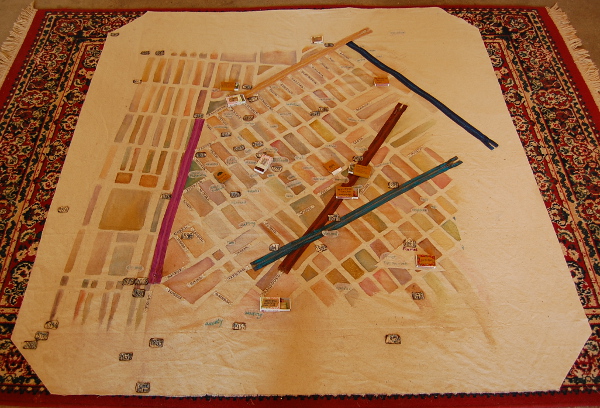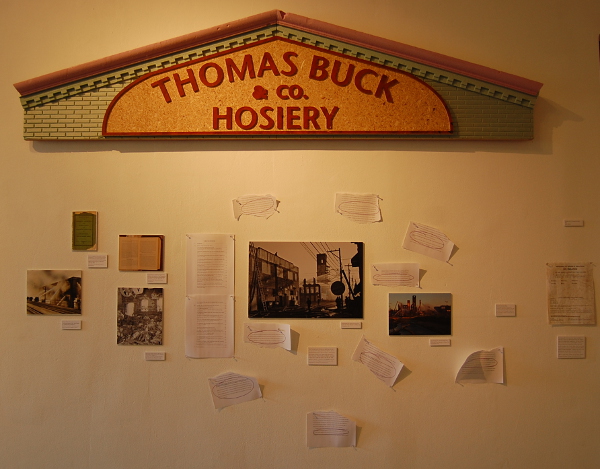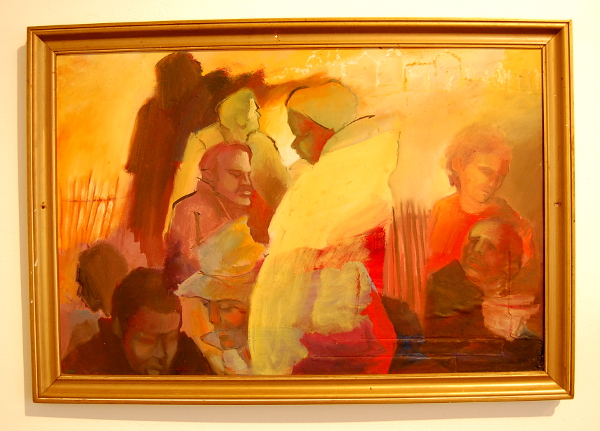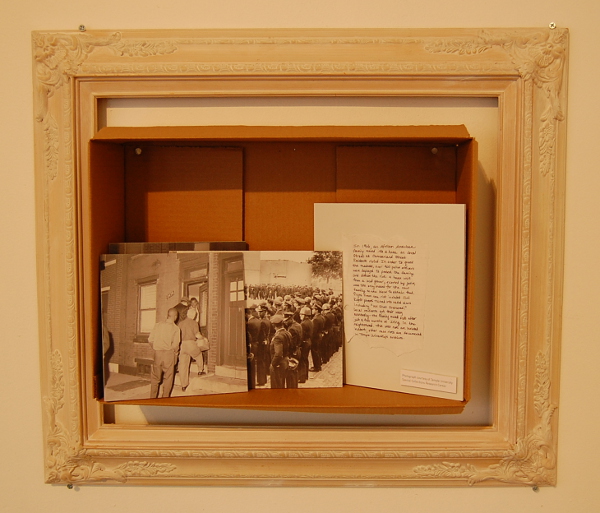
Philadelphia Public History Truck fights fire at Little Berlin
By most accounts, the Kensington area of North Philadelphia is a tumultuous one, and there are plenty of depictions and descriptions on display this month at Little Berlin to back up this claim. This Knight Arts grantee is currently host to stories and artifacts of a diverse and sometimes dangerous neighborhood courtesy of the Philadelphia Public History Truck for their inaugural exhibition, “Manufacturing Fire.”
Through partnerships with various grassroots organizations like the East Kensington Neighbors Association and by engaging directly with local artists and residents, the Philadelphia Public History Truck digs deep into the fabric of Philly to uncover the hidden histories all around us. In Kensington, the urban environment is at times oppressive amidst the mix of industry and abandonment, and coupled with racial tension and dangers of violence or accidents, this landscape can seem inhospitable – and yet it is riddled with row homes and inhabitants. Philadelphia Public History Truck offers them a vehicle by which to tell their tales.
As a major global industrial hub at the turn of last century, Kensington has been heavily influenced by its past as a manufacturing mainstay, specifically in terms of the textile business. Like many locations built around heavy industry in the United States, the end of the 20th century meant falling into disrepair and vacancy as production jobs steadily disappeared. Curator Erin Bernard focuses on what the blue-collar-industry-to-empty-warehouse-effect means in a location already wrought with social activism and shaky race relations.
Thomas Colburn’s homage to the fallen Thomas Buck & Co. Hosiery building.
One thing that comes to the forefront – both in the early days of textile mills and in their decay – is the prevalence of fires. A watercolor map based on Smedley’s 1862 Atlas of Philadelphia marks the locations of major blazes with their accompanying dates while similarly designating hotspots of activism with books of matches. The entire piece lies on a rug as a nod to Kensington’s former carpet manufacturing, while smaller pieces of fabric denote personal memories included by longtime locals.
The Thomas Buck & Co. Hosiery building is commemorated in a triangular roof-like awning in wood by Lewis Colburn. Underneath, photos of the fire that destroyed it and various Licenses and Inspections documents from the 150-page investigation dot the wall alongside information about historical Philadelphia fires. When the structure burned down in 2012, two firefighters were killed in the process, reigniting debates about the structural integrity of neglected properties and their potential dangers to communities and first responders.
Sister Helen Brancato, “The New Jerusalem.”
Photographs serve to illustrate the plethora of activist and community organized groups that have existed in and around Kensington. Work with the St. Francis Inn Ministries and recognition of the now defunct Kensington Soup Society highlight outreach programs and assistance offered to the many poor and homeless residents that call the neighborhood home. A colorful painting from St. Francis Inn Ministries made by Sister Helen Brancato in the 1980s hangs alongside documents from nearby soup kitchens. It was damaged by a man with a knife but restored, offering a glimpse into the past and present of these organizations and their work, and the sometimes trying situations they encounter.
Erin Bernard, “Mr. and Mrs. Leon Wright moved in with their three children.”
Elsewhere race is explored through documentary photos of Coral Street’s first African American family. The historically white, working class neighborhood was thrown into strife and some 400 police officers were deployed to quell the madness. A small walking tour also examines routes people of different races may have needed to take to avoid violence in the area. With pockets of ethnic communities, a black man would have known 50 years ago which streets to avoid when returning home late at night – a grim but noteworthy fact of life at the time. Although these scenarios seem hard to fathom in 2014, surely race relations are not always as simple or safe as we would like them to be.
While the Philadelphia Public History Truck is relatively new on the scene, they hope to expand greatly in the coming months and years. By engaging a wide cross-section of groups and minds, as well as offering exhibits, discussions, and a signature mobile element, they seek to dig up the past while looking to the future. “Manufacturing Fire” will be at Little Berlin’s Viking Mill through April 26, when they will hold a closing reception potluck from 5:30 to 8 p.m.
Little Berlin is located at 2430 Coral St., Philadelphia; [email protected]; littleberlin.org.
Recent Content
-
Artsarticle ·
-
Artsarticle ·
-
Artsarticle ·




